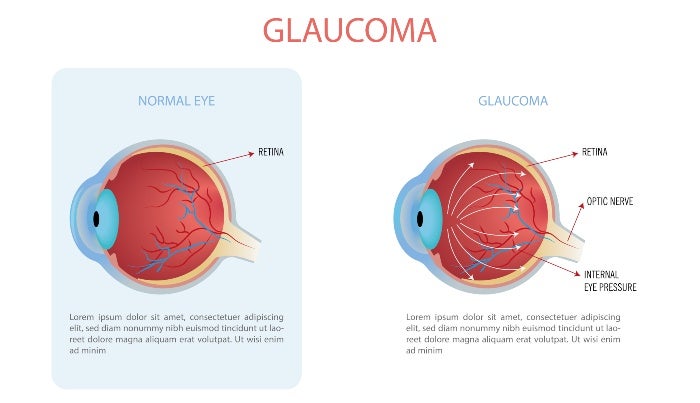Comprehensive Retina Service Near Me: Specialist Take Care Of Your Vision
Comprehensive Retina Service Near Me: Specialist Take Care Of Your Vision
Blog Article
Understanding the Different Vision Adjustment Procedures Available for Clearer View
In the realm of vision improvement procedures, a wide variety of options exist to deal with refractive errors and give individuals with clearer sight. From the extensively recognized LASIK surgical procedure to less intrusive treatments like PRK and implantable lenses, the field of ophthalmology supplies a series of methods customized to fit different requirements and choices. Each procedure includes its very own set of factors to consider, benefits, and possible risks. Recognizing the nuances of these vision modification approaches is critical for making educated choices about one's visual wellness. Let's explore the ins and outs of these procedures and clarified the path to attaining enhanced vision quality.
LASIK Surgical Treatment
LASIK surgical procedure is a common refractive procedure used to deal with vision issues such as farsightedness, astigmatism, and nearsightedness - eyecare near me. This medical technique, which stands for Laser-Assisted in Situ Keratomileusis, aims to improve the cornea to enhance how light is concentrated on the retina, ultimately boosting vision clearness. During the treatment, a slim flap is created on the cornea, and a laser is made use of to get rid of accurate quantities of cells to reshape it suitably. This reshaping permits light to be properly focused onto the retina, correcting refractive mistakes.
One of the main advantages of LASIK surgery is the rapid enhancement in vision experienced by people. In general, LASIK surgical treatment is a prominent choice for people looking for a lasting solution for their vision problems.
PRK Procedure
While additionally a common refractive procedure, the PRK (Photorefractive Keratectomy) technique differs from LASIK surgical treatment in its approach to remedying vision troubles. In PRK, rather of producing a flap on the cornea, the external layer of the cornea, called the epithelium, is completely eliminated. This permits the laser to reshape the cornea to correct refractive errors such as astigmatism, nearsightedness, and farsightedness directly externally.

Regardless of the longer recovery time, PRK can generate excellent results in vision enhancement, making it a beneficial option for those who may not be ideal candidates for LASIK surgery.
Implantable Lenses
In comparison to PRK where the cornea is reshaped directly, implantable lenses use one more method for remedying vision by putting fabricated lenses inside the eye. This procedure is specifically helpful for people with high degrees of nearsightedness, astigmatism, or farsightedness who might not be appropriate prospects for laser surgical treatments like LASIK or PRK.
Implantable lenses, likewise understood as phakic intraocular lenses, work by supplementing the eye's all-natural lens with a synthetic one. eyecare near me. These lenses can be placed in front of the all-natural lens (former chamber) or behind the iris and before the natural lens (posterior chamber) By changing the power and positioning of these lenses, ophthalmologists can successfully fix refractive mistakes and improve visual acuity
One benefit of implantable lenses is that they are detachable and exchangeable, providing versatility for future adjustments. Nonetheless, just like any type of procedure, there are risks included, such as infection or cataract development. Individuals considering implantable lenses should talk to an eye care expert to establish one of the most ideal option based on their private requirements and eye health and wellness.
Corneal Rings
Corneal rings, also called intracorneal ring segments, are small, transparent gadgets put into the cornea to correct vision distortions such as keratoconus. Keratoconus is a problem where the cornea thins and bulges exterior, causing vision to end up being altered. The insertion of corneal rings assists to squash the cornea, improving aesthetic skill and decreasing the irregular astigmatism brought on by keratoconus.
The treatment for placing corneal rings is minimally intrusive and relatively quick, frequently carried out as an outpatient procedure. During the surgical treatment, the ophthalmologist makes a small incision in the cornea and inserts the rings at a details deepness. When in position, the rings assist to reshape the cornea, helpful site providing a smoother surface for light to get in the eye, which can result in more clear vision.
Corneal rings are considered a reversible procedure, glaucoma service near me as they can be eliminated or changed if essential. eyecare near me. While they might not totally eliminate the demand for glasses or contact lenses, corneal rings can substantially boost vision quality and general aesthetic comfort for people with keratoconus or other corneal abnormalities
Refractive Lens Exchange
Adhering to the correction of corneal irregularities with treatments like corneal rings, one more vision adjustment strategy that can address refractive errors is Refractive Lens Exchange (RLE) RLE is a surgical treatment that includes replacing the eye's natural lens with a man-made intraocular lens (IOL) to fix refractive mistakes such as presbyopia, farsightedness, and nearsightedness. This procedure is specifically valuable for individuals who may not appropriate prospects for procedures like LASIK or PRK due to elements such as thin corneas or high refractive mistakes.

Conclusion
In verdict, there are numerous vision modification treatments readily available to aid people attain more clear sight. LASIK surgery, PRK procedure, implantable lenses, corneal rings, and refractive lens exchange are all options that can resolve various vision problems.
In the realm of vision correction treatments, a multitude of alternatives exist to deal with refractive mistakes and give people with more clear sight.LASIK surgical treatment is a typical refractive procedure used to correct vision issues such as nearsightedness, astigmatism, her comment is here and farsightedness.While also an usual refractive treatment, the PRK (Photorefractive Keratectomy) technique varies from LASIK surgical procedure in its technique to dealing with vision issues.Following the correction of corneal abnormalities with procedures like corneal rings, an additional vision modification technique that can deal with refractive mistakes is Refractive Lens Exchange (RLE) LASIK surgery, PRK procedure, implantable lenses, corneal rings, and refractive lens exchange are all alternatives that can attend to different vision issues.
Report this page